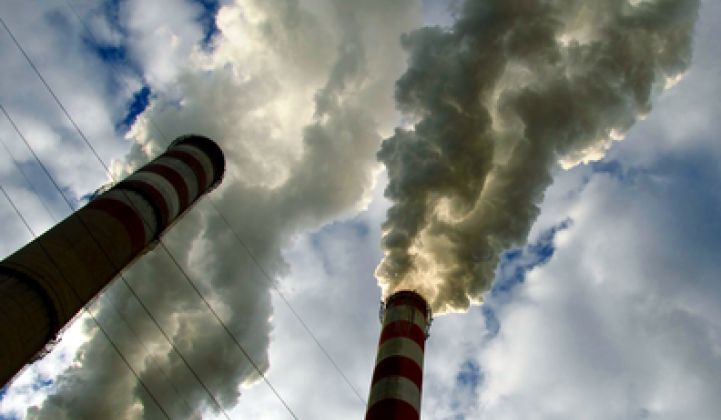A team at the Massachusetts Institute of Technology has unveiled a battery technology that could potentially mop up carbon dioxide from thermal power plants.
The lithium-based battery works by absorbing carbon dioxide into a water-based amine called 2-ethoxyethylamine and then mixing this with a non-aqueous liquid electrolyte used alongside a carbon cathode and a lithium anode.
With every discharge, the carbon dioxide is converted into a solid mineral carbonate that builds up on the cathode. Carbon dioxide is thus used up as the battery cycles and converted to an inert material that can serve as a source of carbon for industrial purposes.
A paper in the energy research journal Joule said the research highlighted “the coupling of CO2 capture chemistry to non-aqueous batteries as a promising approach for the design and manipulation of CO2 conversion reactions.”
Researchers hope the lithium-carbon battery technology might be able to overcome a major problem with existing carbon-capture systems: They require massive amounts of energy.
“Currently, power plants equipped with carbon-capture systems generally use up to 30 percent of the electricity they generate just to power the capture, release and storage of carbon dioxide,” said MIT in a press release.
The MIT battery is expected to have a voltage and capacity competitive with state-of-the-art lithium-gas batteries, the press release said.
While the battery would need frequent carbon dioxide refills, the amine acts as a molecular promoter and is not consumed in the battery reaction, it noted.
MIT Assistant Professor of mechanical engineering Betar Gallant, who carried out the research alongside doctoral student Aliza Khurram and postdoc Mingfu He, said the technology could be used in one of two ways.
One would be to feed the electrolyte into portable batteries that could then be used elsewhere, until the electrolyte became exhausted. The other would be for the battery to be co-located with a power plant, absorbing carbon dioxide into its electrolyte on a continuous basis.
Along with absorbing carbon dioxide, the device could help the generation asset work more efficiently, she said.
Lithium-carbon dioxide batteries are not a new idea, but their development has been hampered by the low reactivity of the gas. Research up to now has focused on generating reactions using expensive metal catalysts.
Researchers haven't figured out how these catalysts worked, which made the reactions hard to control. “Researchers are still trying to understand the charging reaction,” Gallant said.
The use of amines to activate carbon dioxide in the battery could yield a “more facile electrochemistry,” she said.
“Aqueous amines and non-aqueous battery electrolytes are not normally used together, but we found that their combination imparts new and interesting behaviors that can increase the discharge voltage and allow for sustained conversion of carbon dioxide.”
A battery that can eat up carbon dioxide is still some way off from reality, though. The MIT prototype is only able to cycle 10 times, for example. “There’s really a lot of fundamental science left to do,” Gallant said.
Key next steps in the research will include trying to improve the technology and assessing its economic viability. The research team also intends to investigate how the battery might work under real-world conditions.
At the moment, the battery has only been tested with pure carbon dioxide. It is unclear how it would work with the typical flue gas from a power plant, which is contaminated with impurities.
Carrying out the research needed before commercialization could take up to five years, Gallant said.
Daniel Finn-Foley, senior analyst for energy storage at Wood Mackenzie, said it would have to measure up to conventional lithium-ion batteries on price.
“It will take some time outside the lab to see if this approach has the legs to do so,” he said.
However, he added: “One long-term point in this technology’s favor is California’s new 100 percent clean energy bill. Capturing and sequestering emissions may be an approach used to reach 100 percent clean energy, rather than renewables, and batteries will be in high demand as more intermittent resources come onto the grid,” he said.




